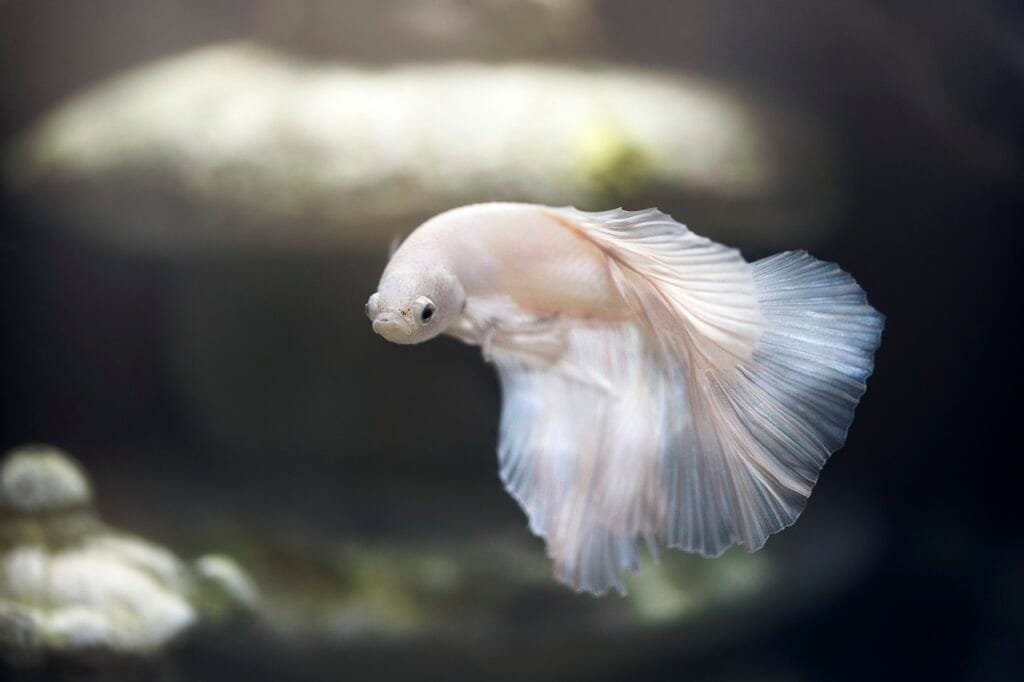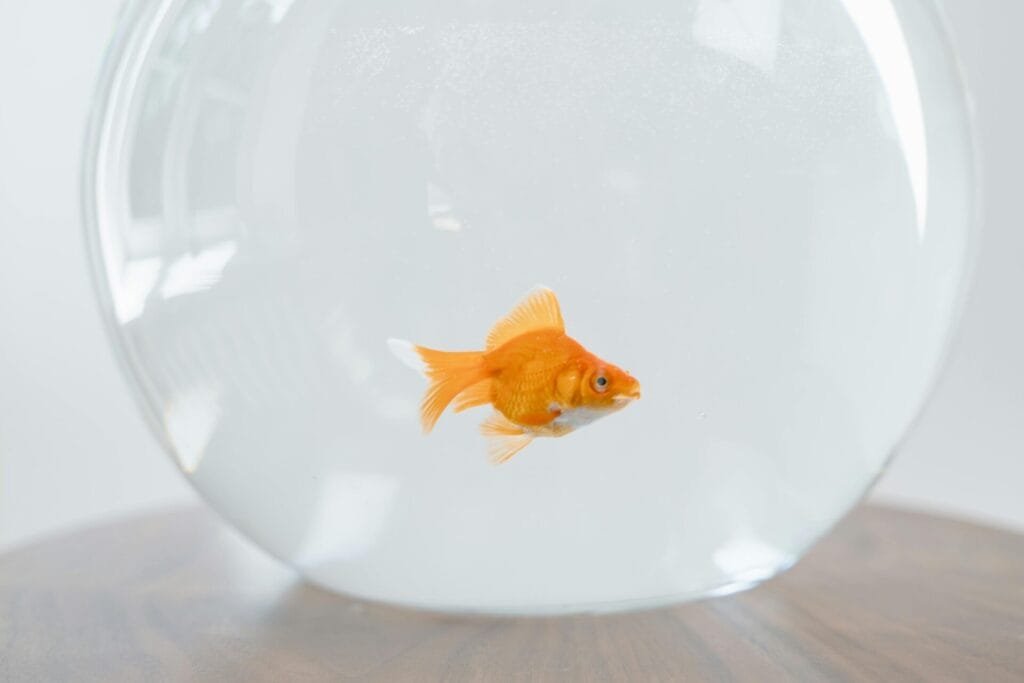If you’ve noticed that your betta fish is turning white, it’s natural to be concerned. Betta fish are well-known for their vibrant colors, so a change to white can be quite alarming. In this article, we will explore the reasons behind this color change and provide guidance on how to address and prevent it.
There are several factors that can contribute to a betta fish turning white. These include stress, poor water quality, disease, and old age. By understanding these causes, you can take appropriate measures to help your betta fish regain its vibrant coloration and ensure its overall well-being.
Throughout this article, we will delve into each of these causes in more detail and provide actionable tips for prevention and treatment. Whether you’re a new betta fish owner or a seasoned enthusiast, by implementing the right strategies, you can help your betta fish maintain its stunning hues and thrive in its aquatic environment.
Stressful Environment as a Cause of Betta Fish Turning White
One of the main reasons why betta fish may turn white is due to stress. Changes in the environment, such as shifting tank settings or the presence of aggressive tankmates, can cause stress in bettas, leading to color fading. Stress stripes, which are light and dark horizontal stripes along the body, may also appear.
To minimize stress and prevent betta fish from turning white, it is crucial to observe and address potential stressors. Providing a comfortable and clean tank environment can significantly reduce stress levels. Additionally, ensuring appropriate tank mates that are compatible with bettas can create a harmonious and stress-free atmosphere.
By taking proactive steps to reduce stress, betta fish can thrive and maintain their vibrant colors. Remember that a tranquil and suitable environment plays a crucial role in the overall well-being of your betta.
Water Quality as a Factor in Betta Fish Turning White
Poor water quality is a significant contributor to betta fish turning white. High levels of ammonia, nitrite, and nitrate in the tank can have a detrimental effect on your betta’s coloration. To maintain the vibrant colors of your betta fish, it is essential to prioritize water quality and take necessary steps to prevent color fading.
Regular water changes play a crucial role in maintaining optimal water quality. The frequency of water changes depends on the size of your tank, but a general guideline is to replace 20-30% of the tank water every week. This helps remove accumulated toxins and maintains a healthy environment for your betta fish.
In addition to water changes, it is important to monitor and maintain proper water parameters. Regularly test the water for ammonia, nitrite, and nitrate levels using a reliable aquarium test kit. If the levels are elevated, take immediate action to rectify the situation. Ammonia and nitrite should ideally be at 0 ppm, while nitrate levels should be kept below 20 ppm.
Proper tank filtration is also crucial for maintaining good water quality. Invest in a high-quality filtration system that suits the size of your tank. This will help remove impurities and keep the water clean and clear, reducing the likelihood of color fading in your betta fish.
Regular tank maintenance is another vital aspect of ensuring optimal water quality. Clean the tank regularly, removing any debris, uneaten food, and waste that may accumulate. This will prevent the buildup of harmful substances and bacteria that can affect your betta’s coloration.
By prioritizing water quality and implementing proper care and maintenance strategies, you can effectively prevent color fading and promote the overall health and vibrancy of your betta fish.
Aging as a Natural Cause of Betta Fish Turning White
As betta fish age, it is normal for them to exhibit a loss of color. Betta fish typically have a lifespan of 2 to 3 years, and as they mature, their colors may fade. This aging process is natural and cannot be prevented. Understanding that age-related color loss is a normal occurrence and providing appropriate care and attention to aging bettas can help ensure their overall well-being.
The natural process of aging can cause betta fish to turn pale and lose their vibrant hues. It is important for betta fish owners to be aware of this phenomenon in order to differentiate between normal color changes and potential underlying health issues. While age-related color fading is unavoidable, providing a comfortable and stress-free environment, maintaining proper water parameters, and offering a balanced diet can help support the overall health and longevity of aging bettas.
Poor Diet as a Possible Cause of Betta Fish Turning White
A poor diet lacking essential nutrients can have a negative impact on the coloration of betta fish, causing them to turn white. Betta fish are carnivorous and require a protein-rich diet to maintain their vibrant colors and overall health. Feeding them a varied and balanced diet is crucial to prevent color fading and promote optimal well-being.
High-quality betta fish pellets should serve as the staple food for your betta. These pellets are specially formulated to provide the necessary nutrients for vibrant coloration. Additionally, including live or frozen foods in their diet can further enhance their color and overall health.
Live foods such as brine shrimp and daphnia are excellent sources of protein and can be fed as occasional treats. These options mimic their natural diet and can help stimulate their appetite and intensify their coloration.
| Dietary Recommendations for Vibrant Coloration | Description |
|---|---|
| Betta Fish Pellets | The main source of nutrition for bettas, these pellets contain the essential nutrients needed to maintain vibrant colors. |
| Brine Shrimp | A popular live food option rich in protein that can enhance coloration and provide variety to their diet. |
| Daphnia | Another nutritious live food that can intensify color and promote overall health in betta fish. |
Remember to feed your betta fish appropriate portion sizes to avoid overfeeding, as this can lead to obesity and other health issues. Observing their feeding behavior and adjusting the quantity as needed will help maintain their vibrant colors while ensuring their well-being.
Signs of a Poor Diet
It’s important to be aware of the signs that indicate your betta fish may be experiencing color fading due to a poor diet. Some common indications include:
- Loss of vibrancy in their coloration
- Paleness or a white appearance in their scales
- Reduced appetite or refusal to eat
- Sluggish behavior or lack of energy
- Weight loss
If you notice any of these signs, it’s crucial to reassess their diet and make the necessary dietary adjustments to improve their coloration and overall health.
Illness and Injury as Factors in Betta Fish Turning White
Illness and injury can have a significant impact on the coloration of betta fish, causing them to turn white. Several common health issues can lead to this color fading, including fin rot, bacterial infections, and infestations of anchor worms. Identifying these conditions promptly and implementing appropriate treatment measures is crucial in preventing further color loss and promoting the recovery of betta fish.
Fin rot, also known as tail rot, is a bacterial infection that can cause discoloration and deterioration of the fins and tail. It typically manifests as frayed or ragged fin edges, accompanied by white or transparent areas. Early detection and treatment with antibacterial medications and ensuring optimal water conditions can help mitigate the effects of fin rot and restore the vibrant colors of betta fish.
Bacterial infections, such as columnaris disease, velvet disease, or popeye, can also lead to color fading in bettas. These infections often present symptoms like white patches or spots on the body and fins, along with other signs of illness, including lethargy and loss of appetite. Prompt intervention with appropriate medications, such as antibiotics or antiparasitics, as well as maintaining pristine water quality, can aid in the recovery of betta fish and help them regain their natural coloration.
Infestations of anchor worms, which are parasites that attach to the betta’s body, can cause skin irritation and damage, resulting in white patches on the fish. Removing the anchor worms using tweezers and treating the affected fish with antiparasitic medications are crucial steps in addressing this issue and preventing further color loss.
Treatment and Prevention
When betta fish exhibit signs of illness or injury, it is crucial to take immediate action. Isolating the affected fish in a quarantine tank can help prevent the spread of diseases and allow for more targeted treatment. Consultation with a veterinarian experienced in fish health is highly recommended for accurate diagnosis and appropriate medication prescription.
Regular monitoring of water parameters, including temperature, pH, ammonia, nitrite, and nitrate levels, is essential in maintaining optimal water quality. Clean and properly maintain the aquarium by performing regular water changes and keeping the filtration system in good condition.
Feeding a well-balanced diet that includes high-quality betta fish pellets and supplementing with live or frozen foods like brine shrimp and daphnia can help boost the betta’s immune system and overall health, reducing the risk of illness and color fading.
By understanding the potential illnesses and injuries that can lead to color fading in betta fish and taking proactive measures to address these issues, betta owners can help ensure the well-being and vibrancy of their beloved aquatic pets.
Betta Fish Turning White: Tips for Prevention and Treatment
To maintain the vibrant coloration of your betta fish and prevent color fading, it is crucial to implement effective prevention and treatment strategies. By creating a stress-free environment, ensuring proper water quality, providing a balanced diet, and addressing any potential health issues promptly, you can help your betta fish maintain its beautiful hues.
Maintain a Stress-Free Environment
- Avoid major changes in the tank setup or decorations, as these can cause stress in betta fish.
- Provide hiding spots and plants to create a sense of security and privacy for your betta.
- Choose tank mates that are compatible with bettas, reducing aggression and stress.
Ensure Proper Water Quality
- Perform regular water changes to maintain optimal water parameters.
- Monitor ammonia, nitrite, and nitrate levels using reliable test kits.
- Invest in a high-quality filtration system to keep the water clean and free from harmful substances.
Provide a Balanced Diet
- Offer a variety of high-quality betta fish pellets to ensure your fish receives essential nutrients.
- Supplement the diet with occasional live or frozen foods like brine shrimp and daphnia for added protein.
- Avoid overfeeding, as excessive food can lead to poor water quality and health problems.
Address Potential Health Issues Promptly
- Regularly monitor your betta fish for any signs of illness or injury.
- If you notice any abnormal behavior, changes in appetite, or physical symptoms, consult an experienced fish veterinarian.
- Follow the recommended treatment plan provided by the veterinarian to address the specific health issue.
By following these tips and taking proactive measures, you can help prevent betta fish color fading and ensure the long-term well-being of your beloved fish companion.
| Tips for Prevention and Treatment | Benefits |
|---|---|
| Create a stress-free environment | Reduces color fading caused by stress |
| Ensure proper water quality | Prevents color fading caused by poor water conditions |
| Provide a balanced diet | Promotes vibrant coloration and overall health |
| Address potential health issues promptly | Prevents further color fading and promotes fish recovery |
Conclusion
When your beloved betta fish starts turning white, it’s natural to feel concerned. However, understanding the reasons behind this color change is crucial for effective prevention and treatment. By addressing potential stress factors, maintaining optimal water quality, providing a nutritious diet, and promptly addressing illnesses or injuries, you can help your betta fish retain their vibrant colors and thrive in their aquarium environment.
Stress is one of the leading causes of betta fish turning white. Ensure a peaceful environment by minimizing stressors, such as sudden changes in tank settings and the presence of aggressive tankmates. Creating a comfortable and clean habitat plays a vital role in preventing color fading and the appearance of stress stripes.
Poor water quality is another factor that can contribute to betta fish turning white. Regular water changes, maintaining appropriate water parameters, and ensuring proper tank filtration and maintenance are essential for maintaining optimal conditions and preserving the betta’s coloration.
Additionally, age-related color loss is natural as betta fish mature. While you cannot prevent this process, providing the best care and attention to your aging betta fish ensures their overall well-being. Finally, a nutritious and varied diet is crucial for vibrant colors in betta fish. Feeding them high-quality betta fish pellets and supplementing their diet with live or frozen foods like brine shrimp and daphnia can enhance their color and keep them healthy.
Remember, regular monitoring and proactive care are key to keeping your betta fish’s colors vibrant throughout their lifespan. By understanding the causes of betta fish turning white and implementing appropriate strategies, you can help your fish thrive and enjoy their captivating beauty for years to come.


